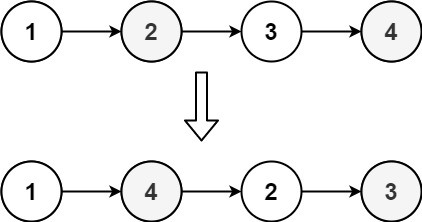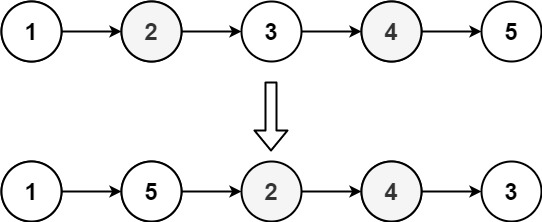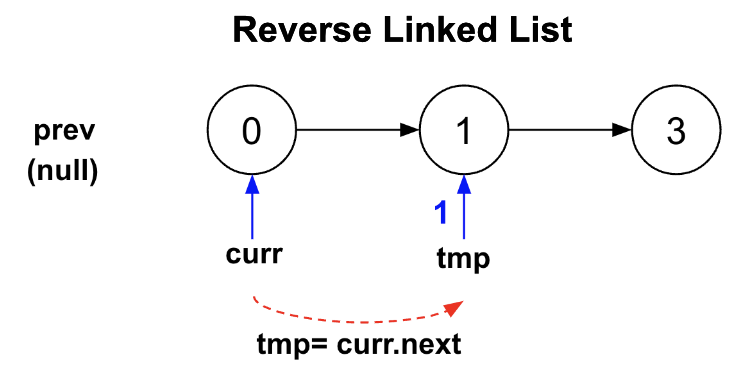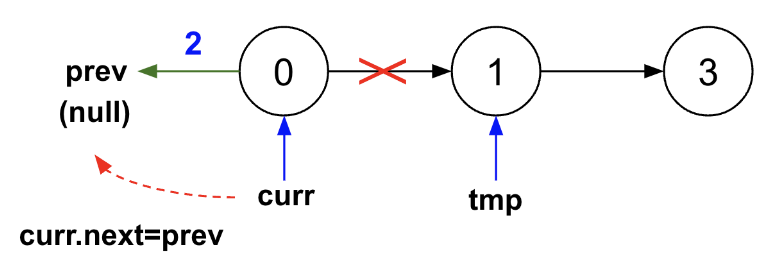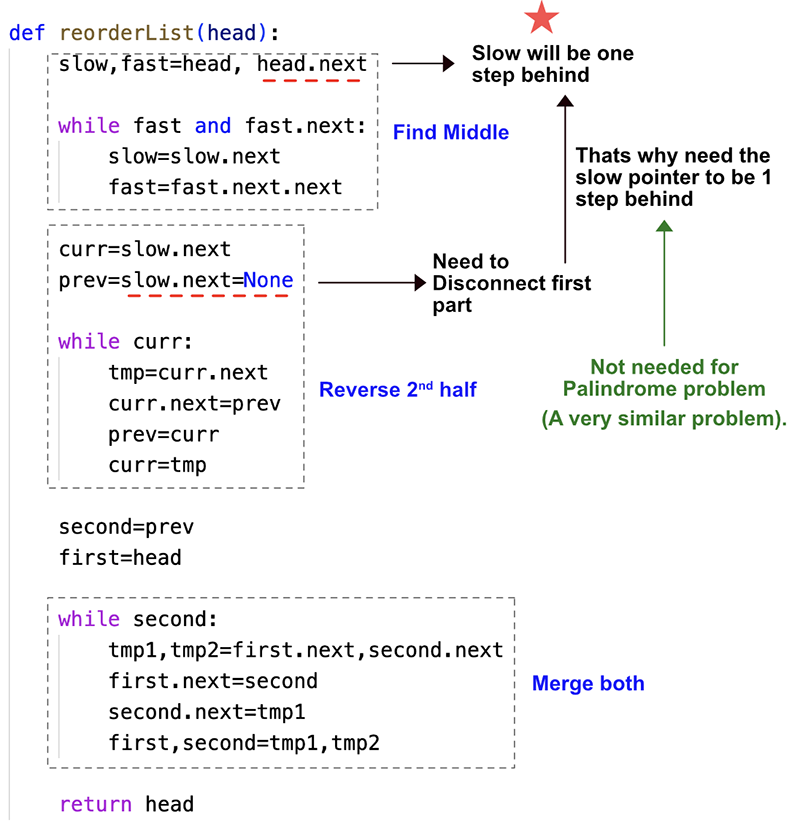Linked List - Reorder List
All diagrams presented herein are original creations, meticulously designed to enhance comprehension and recall. Crafting these aids required considerable effort, and I kindly request attribution if this content is reused elsewhere.
Difficulty : Easy
- Find middle, 2. Reverse Linked List, 3. Merge Linked List
Problem
You are given the head of a singly linked-list. The list can be represented as:
1
L0 → L1 → … → Ln - 1 → Ln
Reorder the list to be on the following form:
1
L0 → Ln → L1 → Ln - 1 → L2 → Ln - 2 → …
You may not modify the values in the list’s nodes. Only nodes themselves may be changed.
Example 1:
1
2
Input: head = [1,2,3,4]
Output: [1,4,2,3]
Example 2:
1
2
Input: head = [1,2,3,4,5]
Output: [1,5,2,4,3]
Solution
This can be solved using 3 steps:
- Find middle node
- Reverse the 2nd half of the LinkedList.
- Merge both Linked List
Find middle node
We can use the classic slow-fast pointer to find the middle of the LinkedList. Only one difference though, we want the slow pointer to point to the last node of the first partition and not the first node of the 2nd partition. (We will find out why in the next section.). In order to implement this way, start the fast pointer one step ahead to head.next
1
2
3
4
5
slow, fast = head, head.next
while fast and fast.next:
slow = slow.next
fast = fast.next.next
Reverse the 2nd half
Now before reversing the 2nd partition, we need to disconnect it from the original list. This is the reason we wanted to the slow pointer to point to the last node of the first partition in the previous step ![]() .
.
The curr pointer will be the start of the 2nd partition.
1
curr = slow.next
The slow.next need to set to None as we want to disconnect the partition.
1
slow.next = None
Need a dummy prev pointer to reverse the linked list.
1
prev = None
Now we need to keep moving curr pointer foward till the end of the loop.
Step 1: Have tmp pointer point to curr.next. This way we are making sure to point curr back to tmp before completing one iteration of the loop.
1
tmp = curr.next
Step 2: Point curr.next to prev. This is where we are actually reversing the LinkedList.
1
curr.next = prev
Step 3: Now since we have reversed till curr, point prev to curr.
1
prev = curr
Step 4: Point curr back to ‘tmp’, so that in the next iteration of the loop the next node can be reversed.
1
curr = tmp
Putting these steps all together.
1
2
3
4
5
while curr:
tmp=curr.next
curr.next=prev
prev=curr
curr=tmp
Merge both Linked List
The prev will now be the head of the 2nd LinkedList after reversal.
1
2
first = head
second = prev
Now traverse through both the LinkedList and merge them.
1
2
3
4
5
6
7
8
9
while second:
# Keep pointers to the next nodes
tmp1,tmp2=first.next,second.next
# Point first to second
first.next=second
# Point second to first.next which is
# now tmp1
second.next = tmp1
first,second = tmp1, tmp2
Visualize the Solution
Final Code
1
2
3
4
5
6
7
8
9
10
11
12
13
14
15
16
17
18
19
20
21
22
23
24
25
26
27
28
29
30
31
32
33
34
def reorder_list(head):
# 1. Find middle node
slow, fast = head, head.next
while fast and fast.next:
slow = slow.next
fast = fast.next.next
# 2. Reverse the 2nd half
curr=slow.next
slow.next=None
prev=None
while curr:
tmp=curr.next
curr.next=prev
prev=curr
curr=tmp
#3. Merge the two list
first = head
second = prev
while second:
# Keep pointers to the next nodes
tmp1,tmp2=first.next,second.next
# Point first to second
first.next=second
# Point second to first.next which is
# now tmp1
second.next = tmp1
first,second = tmp1, tmp2
return head
Runtime Complexity
The runtime will be O(n) as we are simply scanning through the array three times.
